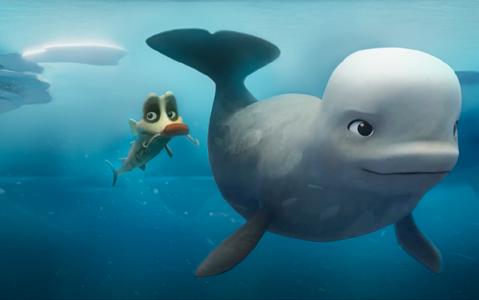
4 minute read
literature on Film & Media Educa- tion
from ECFA Journal September 2022
by ECFA
literature on Film & Media Education
Youth Cinema network is the worldwide network that puts film and media education up front. That is why, we are more than proud to present useful literature on film literacy, published by some of our members.
Advertisement
A. When cinema went to school and came back crying
The chronicle of the “turbulent” relationship between cinema and public education in Greece from 1900 to 1997, written by Nikos Theodosiou (Camera Zizanio)
This book sheds light on unseen aspects of the tumultuous and adventurous relationship between the educational system and cinema in Greece during the 20th century.
This relationship evolved in an environment full of contradictions, highly volatile and turbulent from a social and political perspective, involving wars, civil conflicts, dictatorships and uprisings. It was in this same period that a never-ending discourse developed about the definition of cinema genres, films’ suitability for minors, age restrictions, films’ classification as educational or entertainment, but also about the necessity to use cinema as an educational tool.
The timeline of this research is marked by two dates: 1900 as the beginning (in 1903 the first registered school screening took place in Greece) and 1997 as the end. Not coincidentally! 1996-97 was also the moment when the relationship between schools and cinemas drastically changed due to the launch of Neaniko Plano (Youth Plan), an institution dedicated to Youth Cinema, organising the Olympia Int’l Film Festival for Children & Young People, screening and distributing quality cinema for youth for first time in Greece and introducing innovative educational actions and models.
As no relevant literature about this topic was published before in Greece, this book is based on Nikos Theodosiou’s own long-term pioneer research, involving primary sources, archives, newspapers and magazines.
B. Film in education – setting up a model of film education in secondary schooling
By Ana Đordić (published by the Croatian Film Association)
This book tackles the need to introduce film education into the secondary school education system and, accordingly, to establish a valid model of film education in schools as an essential prerequisite.
Film education for secondary school students is simply is a necessity, as confirmed by the study of European and Croatian film education policies, the study of European and Croatian best practices, and the (pre)historical review of Croatian school film education based upon the available literature, and upon the former and current curricula in the second decade of the 21st century.
A survey among Croatian secondary school teachers already forecasted the difficulties of introducing film education in schools (non-compatibility with current curricula, shift work, the current state of school equipment) but these obstacles are not insurmountable. Furthermore, from the point of view of European institutions, film is understood in two ways – as part of European culture and as part of European industry, i.e. the cultural-identitarian and the economi-

cal-industrial character of film are in a complementary relationship, and film education for young people is of the utmost importance for both.
The importance of European film literacy initiatives is evidenced by the Creative Europe Foundation, which supports film education programmes, as well as EU-funded studies that recognise the marginal position of film in education systems. Despite the fact that the European Union considers film literacy as part of media literacy at times, it still clearly distinguishes the two literacies, insisting on film education for students, emphasising how this is a priority and should be introduced into the education systems as a school subject. There are five European countries (Austria, Denmark, France, Slovenia, and the United Kingdom) that successfully conduct film education programmes at a national level, even when film education is not a part of the national school curricula.
In addition, a large number of film festivals for children and young people develop activities in film education. More precisely, young audience festivals are one of the four main places for film education – along with cinemas, cultural institutions, and schools. Among them, it is still only schools that do not provide it systematically. Therefore, it is a need to have film education integrated into the Croatian school system so that it can be meaningfully structured, and equally accessible to all students. This should be seen as an incentive to continue a tradition of Croatian school film education – after being returned to its prehistory in the second decade of the 21st century – offering Croatian secondary school students the indisputable access to film literacy, to critical, thoughtful, and complete consumption of cinematic works, as well as active participation in the general culture of cinema.
–
Marija Ratković Vidaković










